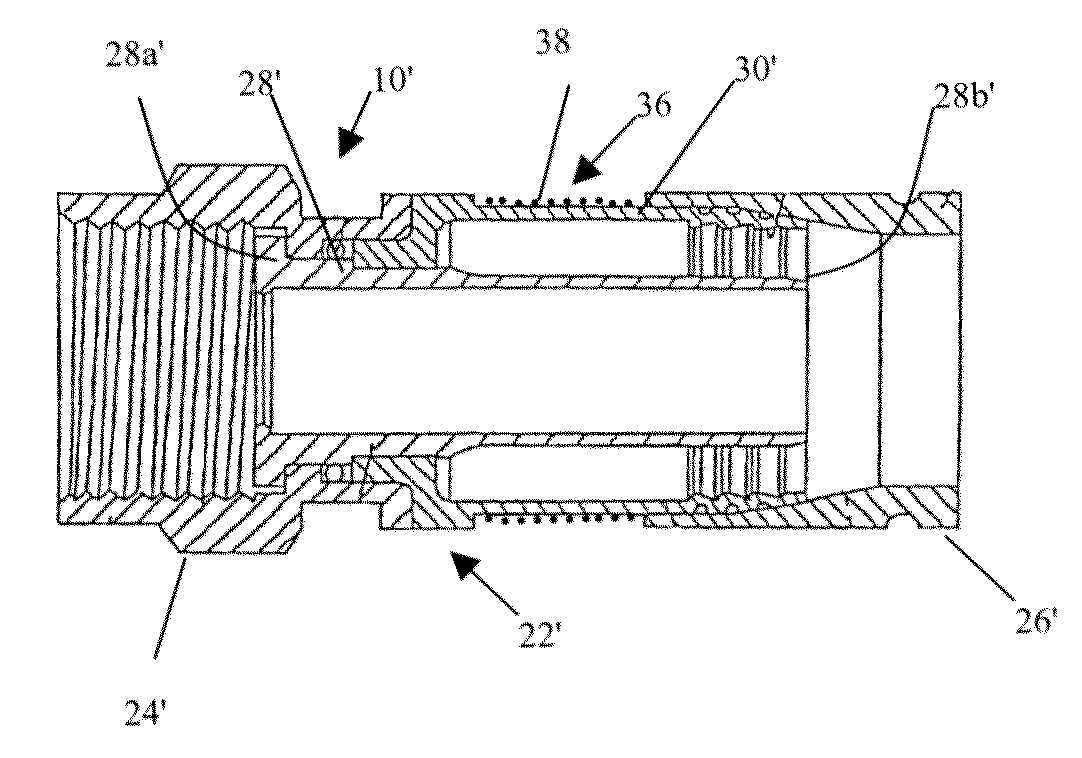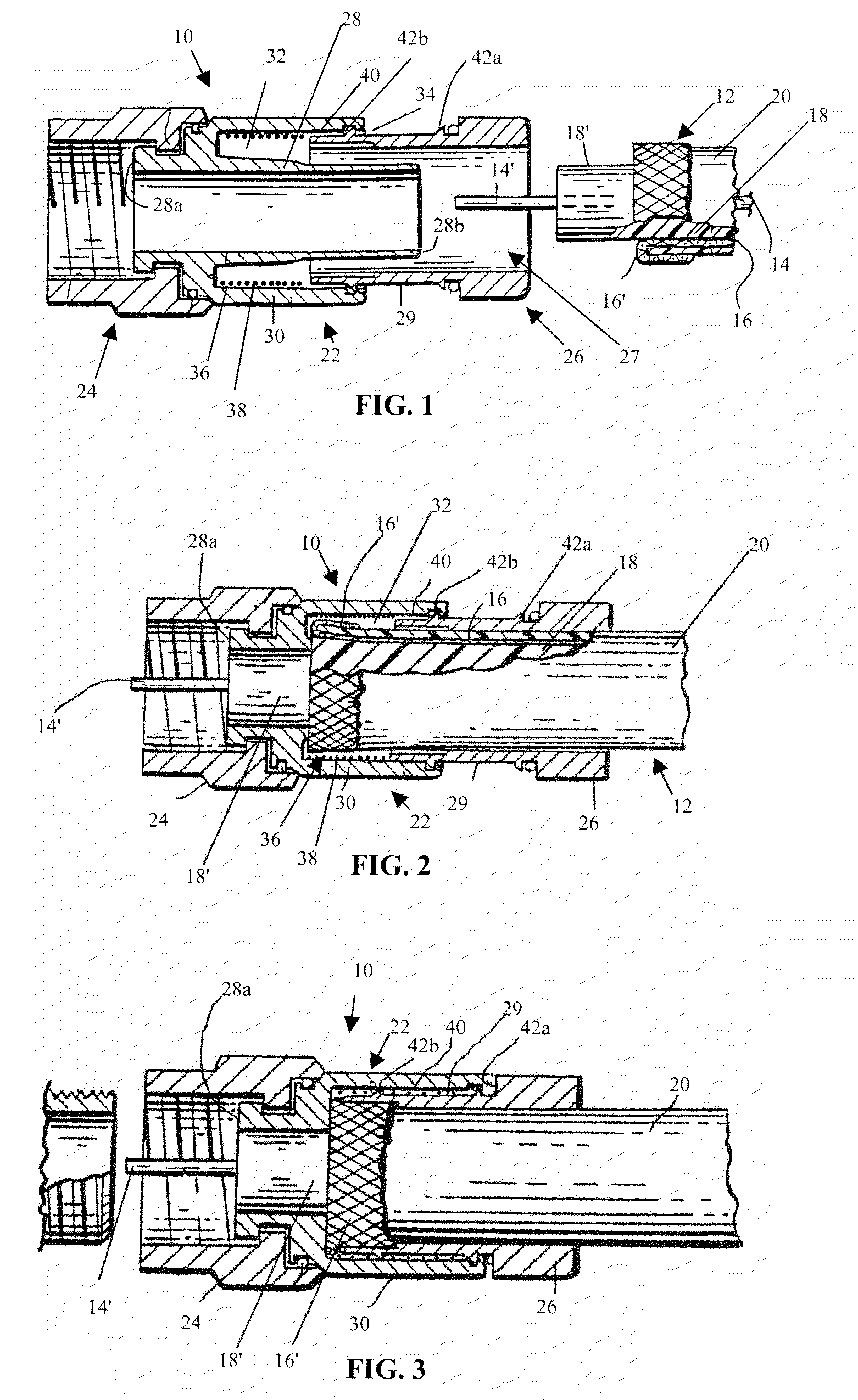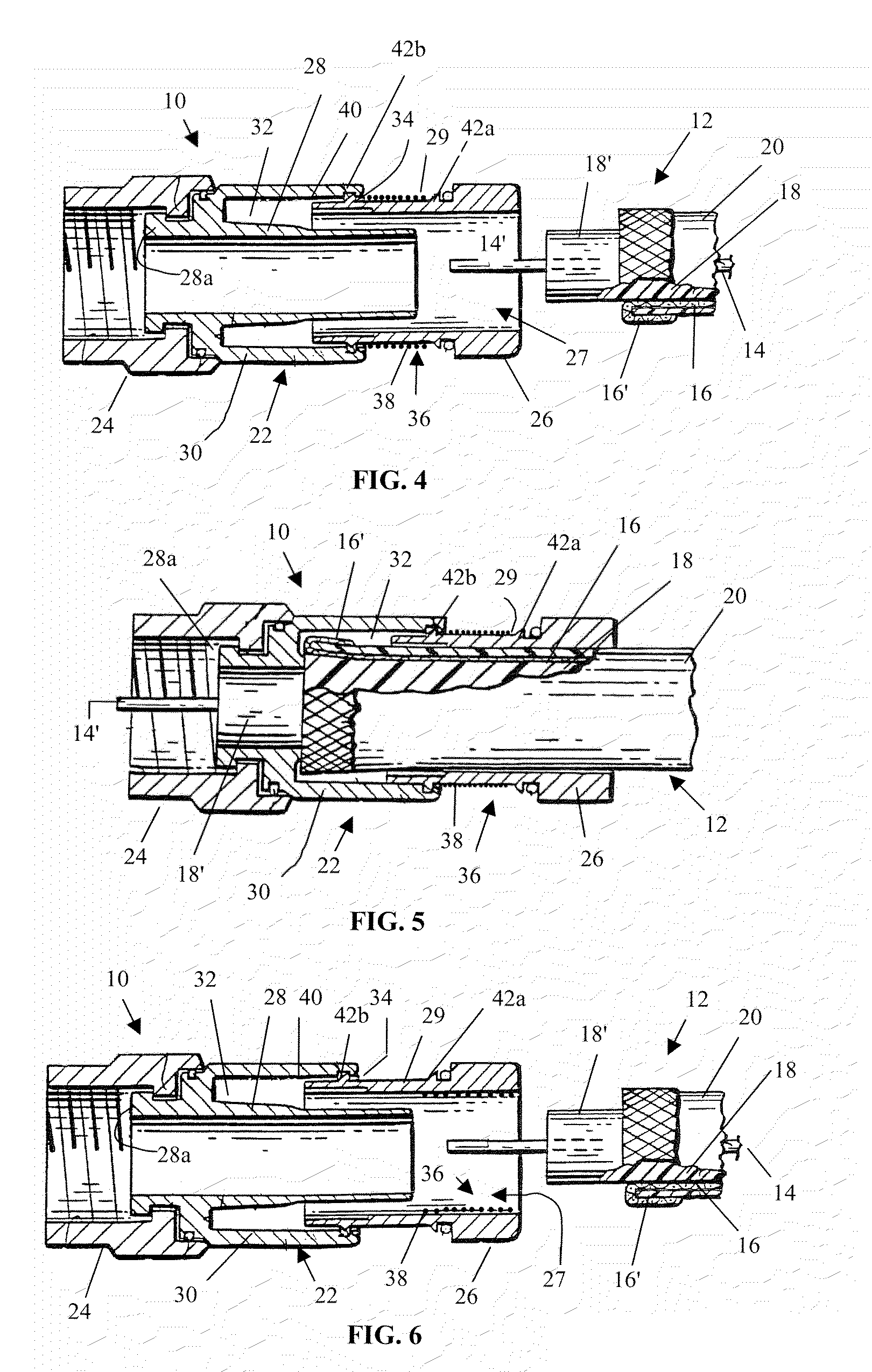Microencapsulation seal for coaxial cable connectors and method of use thereof
a technology of microencapsulation and coaxial cable, which is applied in the direction of electrically conductive adhesive connections, coupling device connections, electrical apparatus, etc., can solve the problems of inability to control, additional problems within the connector, and lower performance and eventual need to replace the connector
- Summary
- Abstract
- Description
- Claims
- Application Information
AI Technical Summary
Benefits of technology
Problems solved by technology
Method used
Image
Examples
first embodiment
[0033]Coaxial cable connector 10 includes a connector body 22, a cylindrical fastener 24 and a compression member 26. Connector body 22 comprises a tubular inner post 28 extending from a front end 28a to a rear end 28b, and an outer cylindrical collar 30 surrounding and fixed relative to the inner post 28 at a location disposed rearwardly of the front end 28. Outer cylindrical collar 30 cooperates in a radially spaced relationship with the inner post 28 to define an annular chamber 32 accessible via a rear opening 34. In a first embodiment, an adhesive layer 36, located on an inner surface 40 of outer cylindrical collar 30, includes microcapsules 38 (shown in stipple) of an adhesive material. Adhesive layer 36 extends around the circumference of inner surface 40 of outer cylindrical collar 30 and along a length of inner surface 40 that can vary depending on the degree of mechanical bonding action desired once the compression member 26 is advanced into connector body 22, at which tim...
second embodiment
[0037]this invention can be seen in FIGS. 4 and 5. FIG. 4 shows an adhesive layer 36 of microcapsules 38 (in stipple) located on a portion of outer surface 29 of compression member 26. As shown in FIG. 5, when installing coaxial cable connector 10 on the prepared end of coaxial cable 12, the tubular inner post rear end 28b is first inserted axially into the cable end. Similar to FIG. 3, when the compression member 26 is compressed within connector body 22, the outer surface 29 of compression member 26 comes into contact with inner surface 40 of outer cylindrical collar 30 with sufficient pressure to rupture the microcapsules 38 of adhesive layer 36. The ruptured microcapsules 38 interact to form a bond between connector body 22 and compression member 26, thereby creating a mechanical connection and a moisture barrier.
third embodiment
[0038]FIGS. 6 and 7 show this invention. FIG. 6 shows the adhesive layer 36 of microcapsules 38 (shown in stipple) located on a portion of compression member internal passageway 27. As shown in FIG. 7, when installing coaxial cable connector 10 on the prepared end of coaxial cable 12, the tubular inner post rear end 28b is first inserted axially into the cable end. In this instance, a microcapsule configured to rupture at a lower applied pressure may be used so that as coaxial cable 12 is inserted into compression member internal passageway 27, microcapsules 38 of adhesive layer 36 are easily ruptured. Similar to FIG. 3, when the compression member 26 is compressed within connector body 22, the ruptured microcapsules 38 form a bond between compression member 26 and coaxial cable 12, thereby creating a mechanical connection and a moisture barrier.
PUM
 Login to View More
Login to View More Abstract
Description
Claims
Application Information
 Login to View More
Login to View More - R&D
- Intellectual Property
- Life Sciences
- Materials
- Tech Scout
- Unparalleled Data Quality
- Higher Quality Content
- 60% Fewer Hallucinations
Browse by: Latest US Patents, China's latest patents, Technical Efficacy Thesaurus, Application Domain, Technology Topic, Popular Technical Reports.
© 2025 PatSnap. All rights reserved.Legal|Privacy policy|Modern Slavery Act Transparency Statement|Sitemap|About US| Contact US: help@patsnap.com



